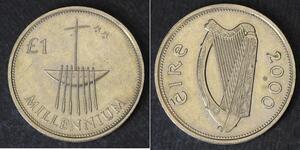1 Dicken Switzerland Silver
Switzerland, Luzern (City & Canton). Silver Dicken Coin. KM-16.
Mint Year: 1612
Denomination: Dicken
Mint Place: Luzern (Switzerland)
Reference: HZM 2-635e, KM-16
Diameter: 32mm
Weight: 8.43gm
Material: Silver
Obverse: Mitred and nimbate half-lenght bust of Saint Leodegar right, shouldering gimlet.
Legend: + SANCT9 + LEODIGARIVS +
Reverse: Cross above double-headed heraldic eagle with arms of Lucerne below.
Legend: MON + NO + LVCE – RNENSIS +
Leodegar of Poitiers (Latin: Leodegarius; French: Léger; c. 615 – October 2, 679 AD) was a martyred Burgundian Bishop of Autun. He was the son of Saint Sigrada and the brother of Saint Warinus. Leodegar was an opponent of Ebroin, the Frankish Mayor of the Palace of Neustria, and the leader of the faction of Burgundian nobles. His torture and death made him a martyr and saint.
Lucerne is a city in north-central Switzerland, in the German-speaking portion of that country. Lucerne is the capital of the Canton of Lucerne and the capital of the district with the same name.
After the fall of the Roman Empire beginning in the 6th century, Germanic Alemannic peoples increased their influence on this area of present day Switzerland. Around 750 the Benedictine Monastery of St. Leodegar was founded, which was later acquired by Murbach Abbey in Alsace in the middle of the 9th century, and by this time the area had become known as Luciaria. In 1178 Lucerne acquired its independence from the jurisdiction of Murbach Abbey, and the founding of the city proper probably occurred this same year. The city gained importance as a strategically located gateway for the growing commerce from the Gotthard trade route.
By 1290 Lucerne became a good-sized, self-sufficient city with about 3000 inhabitants. About this time King Rudolph I von Habsburg gained authority over the Monastery of St. Leodegar and its lands, including Lucerne. The populace did not appreciate the increasing Habsburg influence, and Lucerne allied with neighboring towns to seek independence from Habsburg rule. Along with Lucerne, the three other forest cantons of Uri, Schwyz and Unterwalden formed the “eternal” Swiss Confederacy, known as the Eidgenossenschaft, on November 7, 1332. Later the cities Zurich, Zug and Bern joined the alliance. With the help of these additions, the rule of Austria over the area was ended. The issue was settled through Lucerne’s victory over the Habsburgs in the Battle of Sempach in 1386. For Lucerne this victory ignited an era of expansion. The city shortly granted many rights to itself, rights which had been withheld by the Habsburgs until then. By this time the borders of Lucerne approximately matched those of today.
In 1415 Lucerne gained Reichsfreiheit from Emperor Sigismund and became a strong member of the Swiss confederacy. The city developed its infrastructure, raised taxes, and appointed its own local officials. The city’s population of 3000 dropped about 40% due to the Black Plague and several wars around 1350.
In 1419 town records show the first witch trial against a male person.
Among the growing towns of the confederacy, Lucerne was especially popular in attracting new residents. As the confederacy broke up during Reformation after 1520, most cities became Protestant but Lucerne remained Catholic. After the victory of the Catholics over the Protestants in the Battle at Kappel in 1531, the Catholic towns dominated the confederacy. The future, however, belonged to the Protestant cities like Zurich, Bern and Basel, who defeated the Catholics in the second Villmerg War in 1712. The former prominent position of Lucerne in the confederacy was lost forever. In the 16th and 17th centuries, wars and epidemics became steadily less frequent and as a result the population of the country increased strongly.
Lucerne was also involved in the Swiss peasant war of 1653.
In 1798, nine years after the beginning of the French Revolution, the French army marched into Switzerland. The old confederacy collapsed and the government became democratic. The industrial revolution hit Lucerne rather late, and by 1860 only 1.7% of the population worked in industry, which was about a quarter of the countrywide rate at that time. Agriculture, which employed about 40% of the workers, was the main form of economic output in the canton. Nevertheless, industry was attracted to the city from areas around Lucerne. From 1850 to 1913, the population quadrupled and the flow of settlers increased. In 1856 trains first linked the city to Olten and Basel, then Zug and Zurich in 1864 and finally to the south in 1897.
(3205 X 1534 pixels, file size: ~1M)
Posted by: anonymous 2024-07-30
Untitled Document 1612, Switzerland, Luzern (City & Canton). Silver Dicken Coin. KM-16. Very Rare! Mint Year: 1612 Denomination: Dicken Mint Place: Luzern (Switzerland) Reference: HZM 2-635e (CHF 250 in VF!), KM-16 ($250 in VF!). Condition: Weakly struck on a crudely pr ...
(740 X 370 pixels, file size: ~70K)
Posted by: anonymous 2019-05-30
1620,SCHWEIZ. Luzern. Stadt und Kanton. Dicken 1620, Luzern. 6.34 g. Wiel. (Luzern) 74. D.T. 1170d. HMZ 2-635lm. Selten in dieser Erhaltung / Rare in this condition. Fast vorzüglich / About extremely fine.
(740 X 364 pixels, file size: ~64K)
Posted by: anonymous 2019-05-30
1619,SCHWEIZ. Luzern. Stadt und Kanton. Dicken 1619, Luzern. 8.12 g. Wiel. (Luzern) 73a. D.T. 1170c. HMZ 2-635l. Selten / Rare. Sehr schön / Very fine.
(740 X 365 pixels, file size: ~58K)
Posted by: anonymous 2019-05-30
1618,SCHWEIZ. Luzern. Stadt und Kanton. Dicken 1618, Luzern. 7.81 g. Wiel. (Luzern) 72a/72. D.T. 1170b. HMZ 2-635k. Selten in dieser Erhaltung / Rare in this condition. Vorzüglich / Extremely fine.
(726 X 370 pixels, file size: ~60K)
Posted by: anonymous 2019-05-30
1617,SCHWEIZ. Luzern. Stadt und Kanton. Beischlag 1617, Correggio. Siro d'Austria, principe (1605-1630). Dicken/Testone 1617. Nimbierter Doppeladler zwischen Kreuz. Unten geschweiftes Wappen. * x SYR x AVSTR x S x R x IMP x PR x . Rv. Heiliger nach rechts mit Mitra und Nimbus, in der Rechten e ...
(740 X 365 pixels, file size: ~57K)
Posted by: anonymous 2019-05-30
1617,SCHWEIZ. Luzern. Stadt und Kanton. Dicken 1617, Luzern. 8.17 g. Wiel. (Luzern) 71a. D.T. 1170a. HMZ 2-635j. Fast sehr schön / About very fine.
1 Pound Ireland (1922 - ) Silver
group has 6 coins / 6 prices
⇑

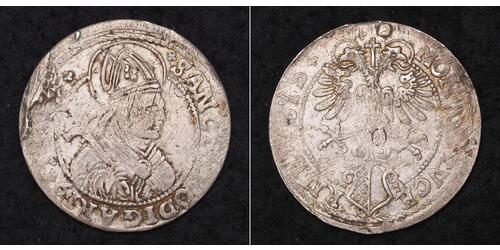
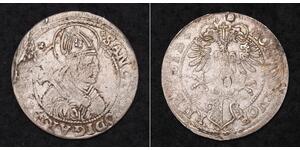
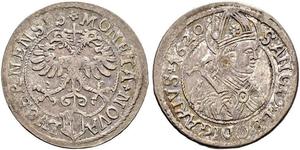
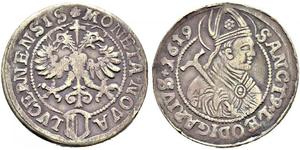
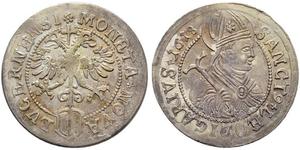
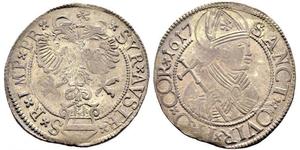
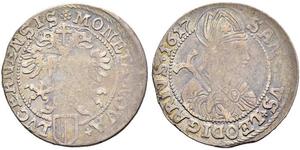






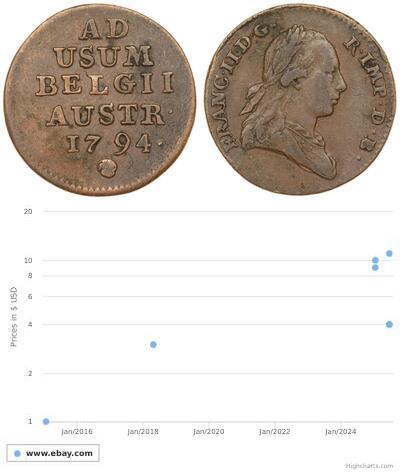
-300-150-IdLBwcI0cU8AAAEqizBDRaSY.jpg)
